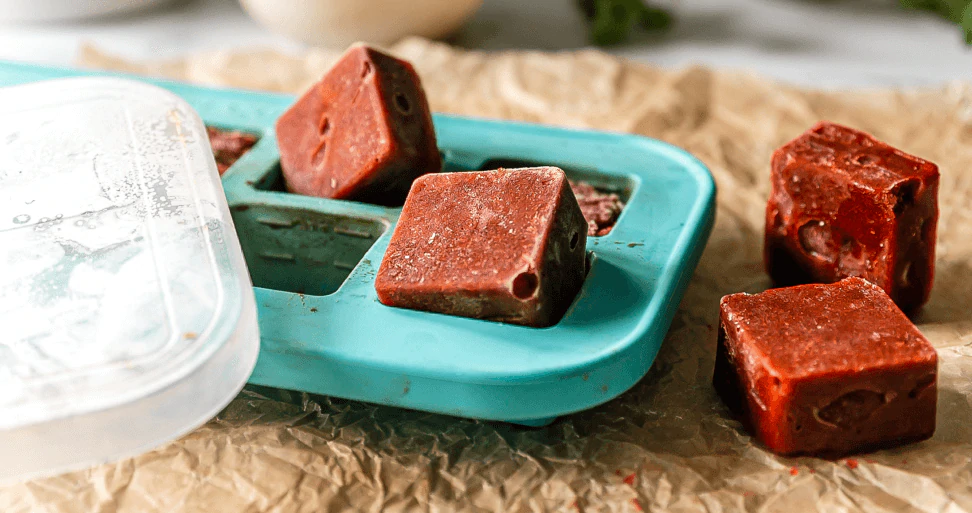If there is one nutrient we all need more of, it's fiber.
As a dietitian, I often talk just as much about what goes into to the body as what goes out. Most people know that fiber helps them go #2, but did you also know that eating more fiber is one of the easiest ways to help you shed a few pounds? Research shows that dietary fiber can also help you stave off diabetes, maintain a healthy weight, and reduce your chance of several health conditions, such as heart disease and some forms of cancer.
But how much do we need and how much do we get? Unfortunately on average, American's only eat 16.2g of fiber per day but the recommendations are much higher. Since 2005, the Dietary Guidelines for Americans has identified fiber as a "nutrient of concern" because only 5% of the population consumes the recommended amount per day.

What is Fiber
Dietary fiber is the part of plant-based foods that your body cannot absorb or digest. Also known as roughage or bulk, fiber passes entirely through your digestive system, which is why it's known to help with constipation and keeping you regular.
Insoluble vs Soluble Fiber
There are 2 types of fiber: insoluble and soluble. Each type is important for maintaining healthy digestion but it's not distinguished by type on a nutrition label. It's important that you get both types of fiber when you are trying to ease constipation as one softens and one bulks.
Soluble fiber, which includes plant pectin and gums, dissolves in water and turns to a gel-like material during digestion. This is the type of fiber that helps you feel full and helps to soften your bowel movements.
Foods with Soluble Fiber
- Oats
- Apples
- Pears
- Figs
- Nectarines
- Apricots
- Beans, especially Black Beans, Lima Beans, and Kidney Beans
- Brussels Sprouts
- Sweet Potatoes
- Broccoli
- Avocados
- Turnips
- Barley
- Hazelnuts
- Flax Seeds
- Sunflower
Insoluble fiber is made of plant cellulose and hemicellulose which does not dissolve in water and in turn, is "bulking." This means food with insoluble fiber barely break down in your digestion so it "grabs" onto other material in your digestive system and helps pull it along.
Foods with Insoluble Fiber
- Wheat Bran
- Whole-Wheat Flour
- Amaranth
- Green Peas
- Cooked Prunes
- Dark, Leafy Greens, such as Spinach, Kale, and Collards
- Nuts, especially Almonds and Pine Nuts
- Beans, especially Soybeans and Pinto Beans
- Cauliflower
- Green Beans
- Potatoes
- Blackberries
- Unpeeled Apples
Health Benefits of Fiber
There are many benefits of eating foods with fiber but some of the most documented include:- Improving gut health
- Reducing constipation
- Helping with weight maintenance
- Reducing risk for diabetes by helping with insulin sensitivity
- Improving blood glucose (sugar) levels
- Reducing blood cholesterol levels
- Reducing risk of colon and breast cancer
How Your Freezer Can Help You Get More Fiber
After a long day of work, often the last thing you want to do is make dinner. When you're trying to eat healthy and not reach for the takeout menu, having homemade frozen food is like giving your future self a gift. Prepping soups, stews, casseroles, whole grains, and healthier sweet treats is not only smart, it's also the easiest way to make sure you always have nutritious foods on hand.
Instead of freezing your food in large portions, freeze them in smaller, individual portions with Souper Cubes. Souper Cubes allow you to freeze your meals in ½-cup, 1 cup, and 2 cup portions so you only defrost what you want, when you want it.
If you're new to freezer meal prep, check out this Ultimate Guide to Freezer Meal Prep. It has everything you need to know from what you can freeze, how to freeze, and how to defrost your food.
Freezer-Friendly Recipes with Fiber
The best way to increase your fiber isn't with a supplement, it's by eating foods that are naturally high in fiber. To help, we've compiled a list of our favorite fiber-rich recipes that you can make in batches and freeze. By having a freezer full of delicious food that also happens to be high in fiber, you'll make sure you're hitting your fiber recommendation everyday.
Peanut Butter Protein Overnight Oats - 10g fiber per 1½ cup serving

(recipe and photo: EatingWell.com)
Overnight oats are exactly what they sounds like - oats that have been soaked overnight - but instead of having to make something the day before, freeze them so you can have them any time. We love these Peanut Butter Protein Overnight Oats because the peanut butter not only provides protein, it also provides healthy fat which helps to keep you full all more.
How to Freeze: freeze the overnight oats in ½-cup or 1 cup portions.
How to Reheat: place the frozen overnight oats in a microwave-safe bowl and cook in the microwave on high in 1 minute intervals, stirring occasionally, until hot. Or place the overnight oats in a small pot on the stove and add a splash of water. Reheat over medium heat, stirring occasionally, until hot.
Berry Chia Pudding - 15g fiber per 1⅓ cup serving

(recipe and photo: EatingWell.com)
Chia seeds are one of the few plant-based good sources of omega-3 fatty acids, plus they have fiber! Here they're mixed with a berries, mango, almond milk and a touch of maple syrup until the chia seeds expand to form a thick pudding. Freeze the Chia Pudding in portions for a creamy, healthy dessert-like breakfast or snack.
How to Freeze: freeze the pudding in ½-cup or 1 cup portions.
How to Reheat: allow for the pudding to defrost overnight in the fridge or at room temperature until no longer frozen, 30 minutes to 1 hour depending on the size of the frozen cube. You can also place the frozen pudding in a microwave-safe bowl and heat in the microwave on medium in 30 second intervals, stirring occasionally, until no longer frozen.
Sweet Potato & Black Bean Chili - 16g fiber per 2 cup serving

(recipe and photo: EatingWell.com)
With chili powder, cumin, and ground chipotle chile, this vegan Sweet Potato & Black Bean Chili is super-flavorful. If you want to add some additional protein, add some ground beef or ground turkey and double the spices and salt.
How to Freeze: freeze the chili in ½-cup, 1 cup, or 2 cup portions.
How to Reheat: place the chili in a microwave-safe bowl and cook in the microwave on high in 1 minute intervals, stirring occasionally, until hot. Or place the chili in a small pot on the stove and add a splash of water. Reheat over medium heat, stirring occasionally, until hot.
Vegetarian Enchilada Casserole - 9g fiber per 1½ cup serving

(recipe and photo: EatingWell.com)
This is the perfect dish to make in the summer when zucchini and squash are rolling out of your garden. To freeze, prepare this recipe through Step 2. Then enjoy the summer even in the winter when you reheat a serving of this Vegetarian Enchilada Casserole. After reheating, top with garnishes.
How to Freeze: freeze the casserole in 1 cup or 2 cup portions.
How to Reheat: place two 1 cup portions or one 2 cup portion in the Souper Cubes stoneware square baking dish. Place the stoneware in the microwave and cook on high in 1 minute intervals until hot. Or place the stoneware in a 350F oven and bake until hot, 30 to 45 minutes. If you do not have the Souper Cubes baking dish, use a comparable-size small baking dish or microwave- or oven-safe dish.
Chicken Parmesan Casserole - 9g fiber per 1 cup serving

(recipe and photo: EatingWell.com)
The whole-wheat pasta gives this comfort food about a third of your daily recommendation for fiber. To make sure the pasta isn't mushy after you freeze and reheat, cook the pasta 2 minutes less than the package instructions in Step 2. Serve the Chicken Parmesan Casserole with a spinach salad for an extra boost of fiber.
How to Freeze: freeze the casserole in 1 cup or 2 cup portions.
How to Reheat: place two 1 cup portions or one 2 cup portion in the Souper Cubes stoneware square baking dish. Place the stoneware in the microwave and cook on high in 1 minute intervals until hot. Or place the stoneware in a 350F oven and bake until hot, 30 to 45 minutes. If you do not have the Souper Cubes baking dish, use a comparable-size small baking dish or microwave- or oven-safe dish.
Hearty Chickpea & Spinach Stew - 13g fiber per 2 cup serving

(recipe and photo: EatingWell.com)
This fiber-packed stew is thick without the use of cream by using a brilliant hack. Half of the chickpeas are mashed and added to the broth, creating a luscious texture that makes this Chickpea & Spinach Stew creamy. Because it's so thick, you'll need an extra splash or water or broth when you reheat it after freezing.
How to Freeze: freeze the stew in ½-cup, 1 cup, or 2 cup portions.
How to Reheat: place the stew in a microwave-safe bowl and cook in the microwave on high in 1 minute intervals, stirring occasionally, until hot. Or place the stew in a small pot on the stove and add a splash of water. Reheat over medium heat, stirring occasionally, until hot.
One-Pot Mac & Cheese with Cauliflower & Brussels Sprouts - 9g fiber per 2 cup serving

(recipe and photo: EatingWell.com)
Using whole-wheat pasta and adding cauliflower and Brussels gives this Mac & Cheese an impressive fiber bump. Freeze in 1 or 2 cup portions so you have a healthy comfort food side dish ready in minutes.
How to Freeze: freeze the mac and cheese in ½-cup, 1 cup, or 2 cup portions.
How to Reheat: place the mac and cheese in a microwave-safe bowl and cook in the microwave on high in 1 minute intervals, stirring occasionally, until hot. Or place the mac and cheese in a small pot on the stove and add a splash of water. Reheat over medium heat, stirring occasionally, until hot.
Chhole (Chickpea Curry) - 6g fiber per cup

(recipe and photo: EatingWell.com)
This super-easy, 20 minute Chickpea Curry is delicious right after you make it but even better when it comes out of the freezer because the spices have more time to infuse into the chickpeas. Serve it over a cup of brown rice and you'll boost the fiber by another 4g.
How to Freeze: freeze the curry in ½-cup, 1 cup, or 2 cup portions.
How to Reheat: place the curry in a microwave-safe bowl and cook in the microwave on high in 1 minute intervals, stirring occasionally, until hot. Or place the curry in a small pot on the stove and add a splash of water. Reheat over medium heat, stirring occasionally, until hot.
What are your favorite fiber-rich recipes to freeze?









We would love to hear your ideas or better yet, post a photo of your cubes organized in our Freezer Meals & Recipes Facebook Group!